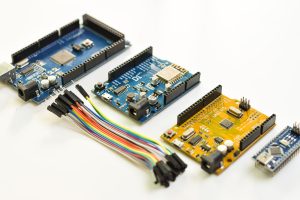Production Possibilities Graph, also known as Production Possibilities Frontier (PPF), is a vital concept in economics to understand the capacity of an economy to produce goods and services. The graph demonstrates the possible combinations of two goods or two categories of goods that can be produced, assuming all resources are efficiently utilized. The purpose of a production possibilities graph is to illustrate the trade-offs and opportunity costs faced by an economic agent, be it a household, firm, or a nation, when deciding the most appropriate allocation of scarce resources.
Understanding the Concept
A production possibilities graph is a simple yet powerful tool that helps economists and policymakers to study the relationships between different production levels. PPF assumes that factors of production, such as land, labor, and capital, are limited in their availability and are primarily used to create goods and services. The graph represents a combination of two goods that can be produced using these limited resources, considering the existing technology and productive efficiency.
The curve of a PPF represents the boundary of maximum output that an economy can achieve. Every point on the PPF represents a trade-off between the two goods, meaning that to produce more of one good, some amount of the other good has to be sacrificed.
Analyzing the Trade-offs and Opportunity Costs
Trade-offs are inevitable in an economy with limited resources, as producing more of one good means producing less of another good. The opportunity cost refers to the next best alternative forgone. A production possibilities graph reveals the opportunity cost of one good in terms of another good by showing different points along the curve.
The slope of the PPF indicates the opportunity cost or the rate of transformation between the two goods. A steeper slope implies a high opportunity cost for the good on the y-axis relative to the good on the x-axis, whereas a flatter slope shows a lower opportunity cost.
Efficient and Inefficient Production Points
A production possibilities graph can also display the concepts of efficiency and inefficiency. If an economy is operating on the PPF curve, it denotes that resources are utilized efficiently, and the economy is operating at its full potential.
Conversely, if the economy is operating at a point inside the PPF curve, it signifies that resources are underutilized or not used as efficiently as possible. The goal of policymakers and economists is to move to the PPF curve or as close to it as feasible in order to achieve optimum efficiency.
Economic Growth and the Effects of Technological Advancements
One of the most compelling applications of a production possibilities graph is demonstrating the effects of economic growth or technological advancements on an economy. When economies grow or technology advances, the PPF shifts outward, indicating that the economy can now produce more goods and services with the available resources. This helps economists analyze an economy’s capacity to grow and improve its production capabilities.
Jadi, jawabannya apa? The purpose of a production possibilities graph is to display the trade-offs and opportunity costs of allocating scarce resources, demonstrate efficient and inefficient production points, and analyze the impact of economic growth and technological advancements on an economy. By understanding these concepts, economists and policymakers can make informed decisions on resource allocation and pursue economic growth.













